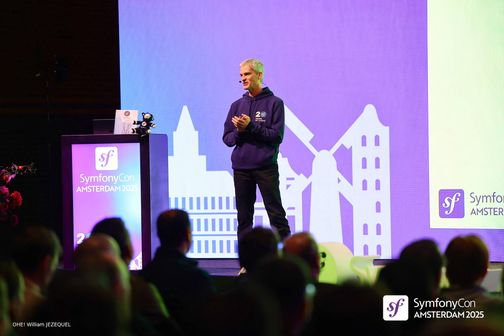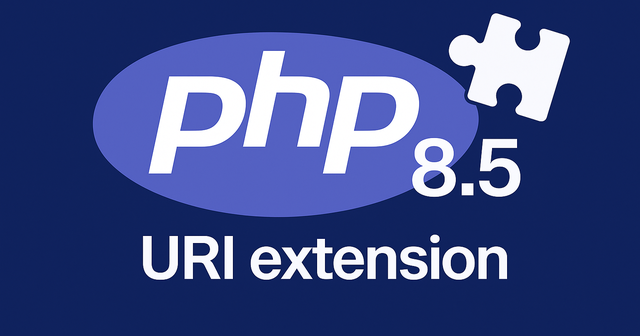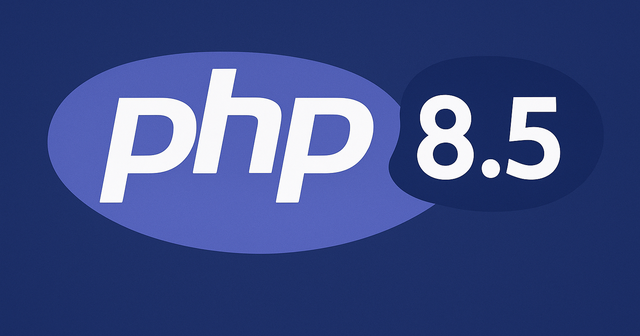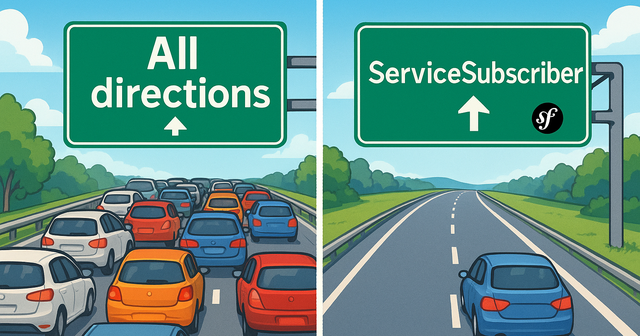Learn how to migrate to the PHP framework Symfony
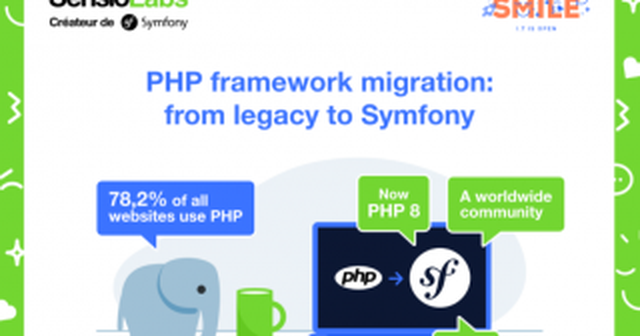
SensioLabs and Smile released a joint white paper “PHP framework migration: from legacy to Symfony” explaining how to migrate to modern PHP frameworks like Symfony. Find a selection of the key information in this infographic design by SensioLabs.
The PHP Ecosystem
Designed in 1994, PHP is an open-source programming language that facilitates interactions between databases and servers. PHP is the foundation of many applications and allows you to structure your code.
Used by more than 78.2% of websites, PHP is one of the dominant computer languages. Because of its open-source nature, PHP relies, like Symfony, on a worldwide community ready to contribute. Thanks to this large community, the PHP language has evolved until its last release: version 8 in December 2020.
PHP often comes with frameworks that allow you to structure the code and facilitate the work of developers. Some companies have developed “in-house” frameworks. But using an open-source framework is the most popular option: of course Symfony, but also Laravel, Yii, CodeIgniter, CakePHP, or Zend.
How to Identify Code Obsolescence?
On one hand, many websites run on legacy code passed between developers. Using legacy code poses risks for complex development projects: quick fixes and patches can be useless at times. Moreover, it’s challenging to determine if a modification will solve the problem or exacerbate it.
On the other hand, some PHP frameworks are not maintained over time. The code is no longer updated or adapted to recent developments. This induces security risks for applications based on these frameworks.
Therefore, to recognize framework obsolescence, we have listed in the white paper 10 signs to watch for. The infographic design highlights 3 critical signs to monitor to prevent obsolescence.
Why Migrate Your PHP Code to Symfony?
To overcome the challenge of obsolescence, you can migrate to Symfony. Symfony is an open-source PHP framework, providing modular and adaptable features. In addition, Symfony is maintained over time, offering a stable working environment. You can check the roadmap on the Symfony website to see the maintenance level of your application.
Symfony makes developers’ lives easier and speeds up website development. Symfony is based on a large, very active community of more than 600,000 developers across 120 countries. Free and open source, the Symfony framework achieves more than 9 million downloads per day.
At the same time, Symfony adapts to the challenges of many businesses. When a company migrates to Symfony, it influences many roles, not only developers but also managers, project managers, and system administrators. In the infographic design, we explain the benefits of Symfony for each role within a company.
Symfony is a Safe Choice
Symfony is a safe choice for the future, thanks to its predictable release cycle. A new version of Symfony is released every 6 months, offering improved features. Every 2 years, Symfony launches a new major version with long-lasting support.
Another advantage of Symfony is that updates are continuous. It allows you to manage deprecations gradually and migrate smoothly. Backward compatibility is also a major feature of Symfony and greatly simplifies migrations between minor versions.
Migrate Your PHP Code to Symfony with SensioLabs
To conclude, do you need to change your PHP framework or upgrade your Symfony application? SensioLabs, the creator of Symfony, helps you migrate to the latest versions of the Symfony framework in a Migration Workshop.
You can find our blog post about the white paper “Migrating to Symfony from legacy PHP code” and download the white paper here.
